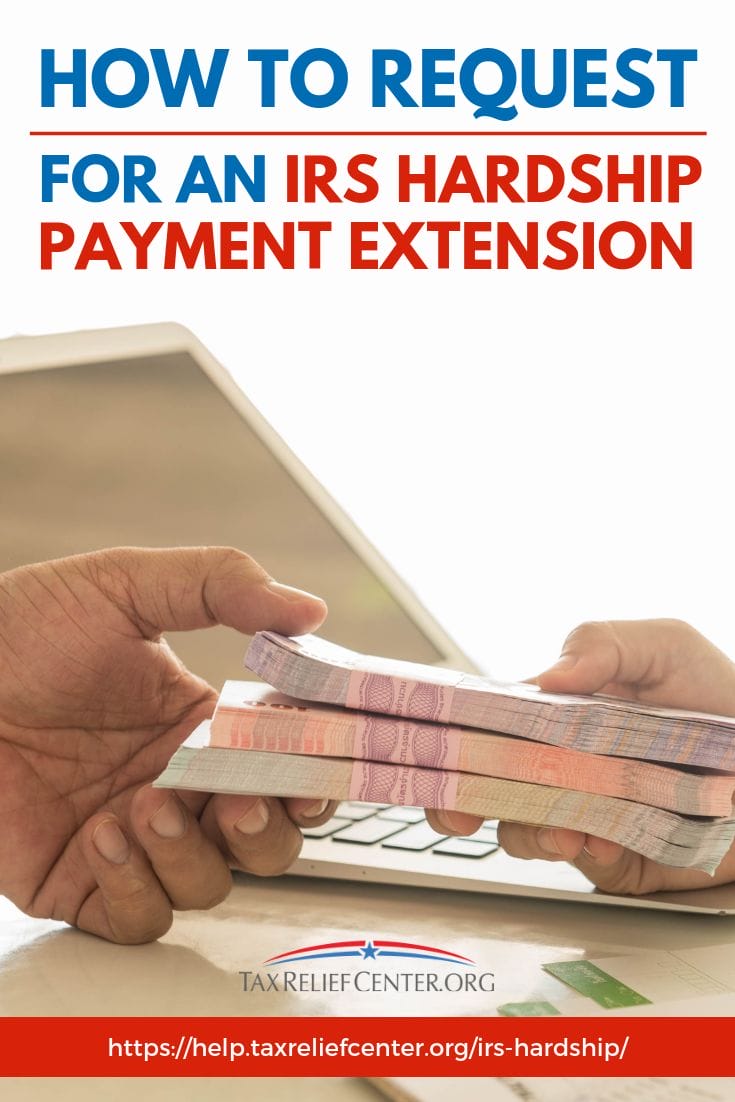Taxpayers with difficulties paying taxes can apply for an IRS hardship extension. Here’s how you can approach the matter.
RELATED: 9 Tax Records You Should Keep In Your Business To Avoid IRS Audit
Steps on How to Apply for an IRS Hardship Payment Extension Program
1. Confirm If You Qualify for the IRS Hardship Program First
For the IRS, hardship is more than not having money to eat out or buy clothes; financial hardship should show that a taxpayer has difficulty paying for necessary and reasonable living expenses.
Taxpayers do not need to show that they currently experience financial difficulty. Even showing the mere possibility of hardship is enough for the taxpayer to possibly get the approval for the IRS hardship program.
Since the IRS hardship program requires a manual review from an IRS officer, what applies to an accepted application may not apply to a rejected one. However, a taxpayer can look at the collection financial standards used by the IRS and compare the numbers against their own records.
These financial standards are comprised of core monthly living expenses that may include, for a single person as of 2019:
- Food reaches $386.
- Housekeeping supplies at $40,
- Apparel and services at $88,
- Personal care products and services at $43, and
- Miscellaneous at $170.
Which means, for a higher chance at getting an approval for the IRS hardship program, the taxpayer should prove inability or difficulty to shell out a total of $727 per month. These values change when the taxpayer also pays for their spouse and other dependents.
Other expenses that the IRS will look at include:
- Out-of-pocket health care expenses,
- Necessary transportation (like going to and from work), and
- Housing and utility bills.
The IRS will look at the average expenses of peers in the locality. Basically, the application requires a substantial time investment both on part of the IRS and the taxpayer.
How does a taxpayer proceed? Taxpayers may find the IRS Form 433-A useful since that contains necessary information the IRS looks for.
After the taxpayer is confident he meets qualifications for the IRS hardship payment extension, then knowing the extension process is next.
2. Know How to Request an Extension for Taxes

If you have not paid or filed taxes yet, expect a failure to file fee of 5% per month and failure to pay fee of .5%, both capped up to 50%, of the unpaid tax debt. These penalties and interest can increase the amount substantially.
A great way to avoid this situation is to ask the IRS for a tax extension.
Presently, taxpayers have two main choices. The first is the usual tax extension request, and the second option is the extension request due to hardship.
Do note that the IRS usually accepts the first category, and the second kind takes more time and effort before the IRS even considers the application.
Let us start with the usual tax extension.
More often than not, taxpayers use IRS Form 4868, as the tax extension is automatic. The taxpayer simply files the form before the tax deadline, usually April 15, gives an estimated tax amount, and sends a payment to show good faith.
Form 4868 does not extend the payment of the taxes, only the filing and reporting. The main reason why taxpayers use Form 4868 is to postpone the failure to file fee, which is 10 times more expensive than the failure to pay fee.
On the other hand, Form 1127 requires the taxpayer to either:
- File the extension before the tax return date if the taxpayer has not paid for any tax liability yet, or
- If the tax amount relates to a deficiency (they paid taxes but lacked funds to pay the whole amount according to the IRS), they must send the tax extension form before the due date in the notices.
As taxpayers can see, the requirements are more stringent. The taxpayer should file as early as possible to minimize the application of interest on unpaid taxes.
The form itself is straightforward, but there are things that should be prepared.
RELATED: Independent Contractor VS Employee: 4 Differences Taxpayers Need To Know
3. Understand and Get More Information About the IRS Form 1127
Form 1127, if approved by the IRS, gives the taxpayer;
- An additional 6 months if the tax deadline still exists for the tax year. This requirement means that the taxpayer informed the IRS of current hardship before the tax deadline.
- Up to 18 months (1 and a half years) if the reason for hardship is tax deficiency. For delinquent taxpayers, this means having penalties applied and at least some tax debts left unpaid after the deadline.
Remember, with Form 1127, penalties no longer apply during the extension but interest still accrues. Also, if the taxpayer does not pay within the extension, the IRS may apply the penalties retroactively.
For the form itself, the taxpayer will find form 1127 relatively simpler compared to other letters.
Form 1127 has three parts in four pages, and taxpayers only answer the first page.
The first part asks two questions: first, what length of time and what reason (tax deficiency or advance notice of hardships before the tax deadline).
Part 2 asks for the reason why the IRS should accept their offer of tax extension due to IRS hardship. Here the taxpayer should explain their current financial environment and prove current or possible financial hardship.
Lastly, part 3 asks for supporting documents as well as signatures and verification. Taxpayers should also not forget to tick off both boxes in this part, or else the IRS will not accept the form.
As for supporting documents, a taxpayer can attach proof of assets and liabilities and income and expenses. Data from these forms should be dated at least three months or earlier as well, to improve the chances of getting approval from the IRS.
4. Look at Other Available Remedies for Delinquent Taxpayers

The IRS does not always grant an IRS hardship tax extension, but that does not mean the taxpayer should give up on minimizing tax debts, fees, and penalties.
The taxpayer can:
- Request for an Offer In Compromise. In this request, the taxpayer offers the IRS a lower tax amount with the assurance that the taxpayer can 1), pay the new offer; 2), the old offer will make tax collection difficult for both parties; and 3), the delinquent taxpayer will abide by the new agreement.
- Apply for a Currently Not Collectible tax status. With this tax status, the IRS postpones the application of fees and penalties as well as the collection of the tax debt for a period of time to provide taxpayers breathing room for the stabilization of their finances.
- Schedule the tax disbursements through an IRS payment plan. By requiring monthly or quarterly payments, the taxpayer can budget the payment of their delinquent taxes better.
Remember, the IRS hardship extension is just one of many options available to taxpayers. Choosing the next option in case the IRS rejects the offer can save taxpayers preparation time.
Getting an IRS hardship tax extension has its own complexities above most IRS processes. By following these steps, a taxpayer can save time and money while increasing the chances of a satisfying answer from the IRS.
Considering applying for an IRS hardship payment extension? How do you plan to go about it? Let us know in the comments section below.
If you owe back taxes, visit taxreliefcenter.org for more information on tax relief options.
Up Next:
- Top 8 Reasons To Appeal An IRS Tax Lien And How To Do It
- 9 Types Of IRS Letters And Notices And What They Mean
- Penalty Abatement: 9 Factors That Can Qualify As Reasonable Cause


